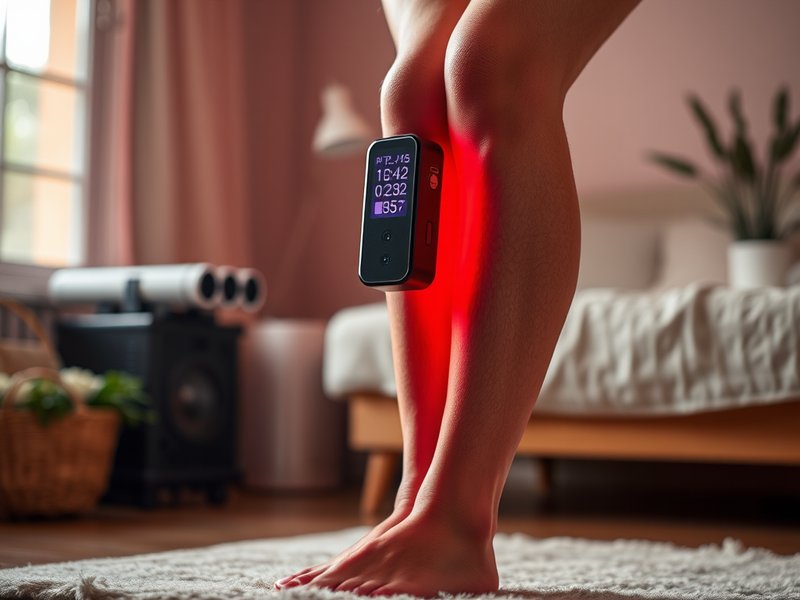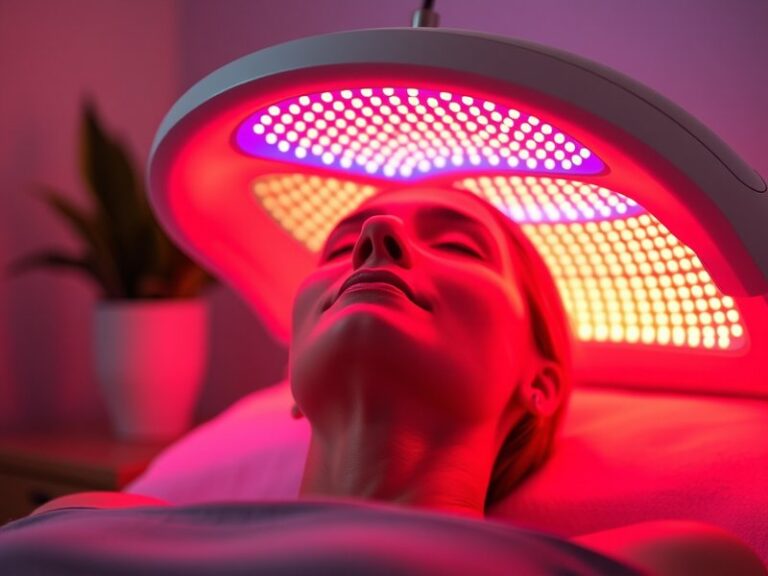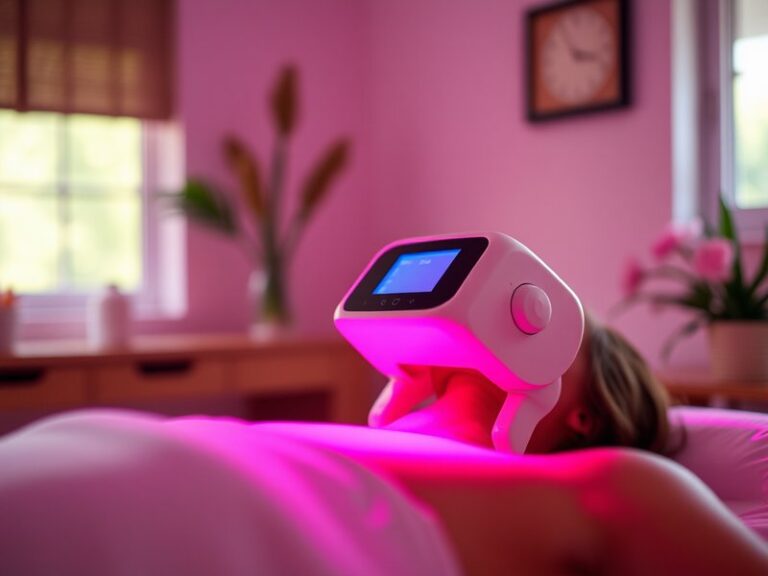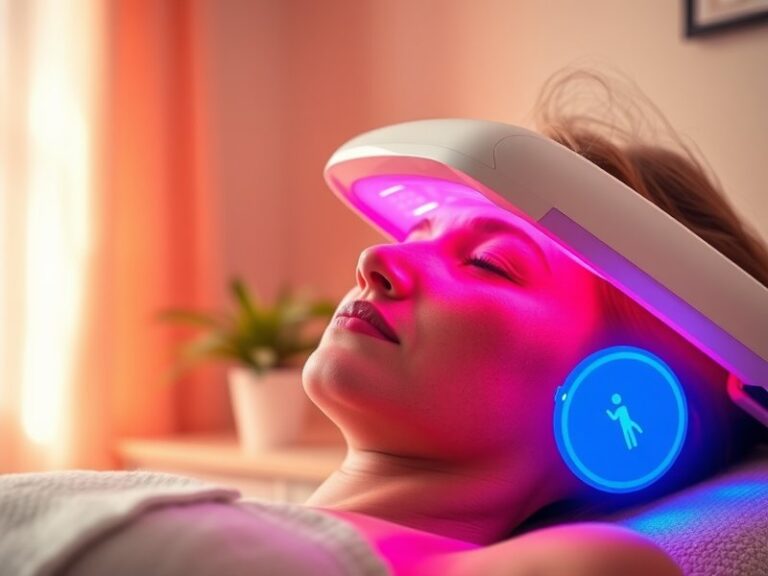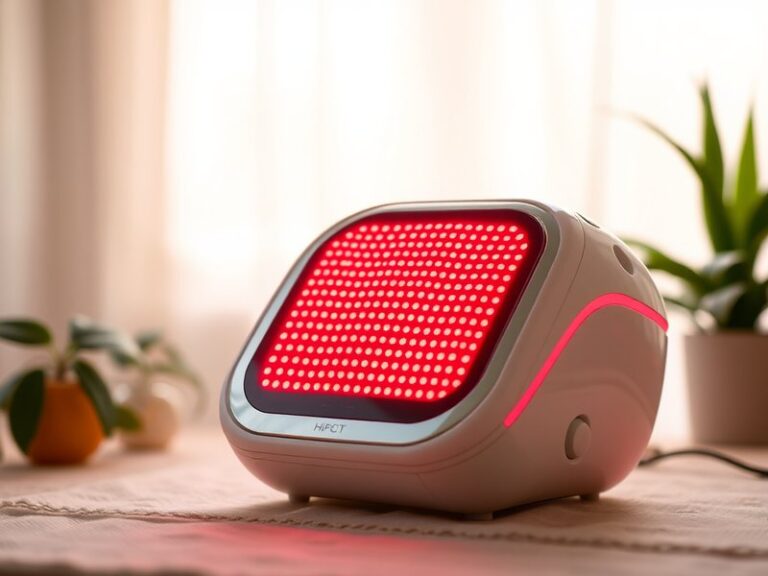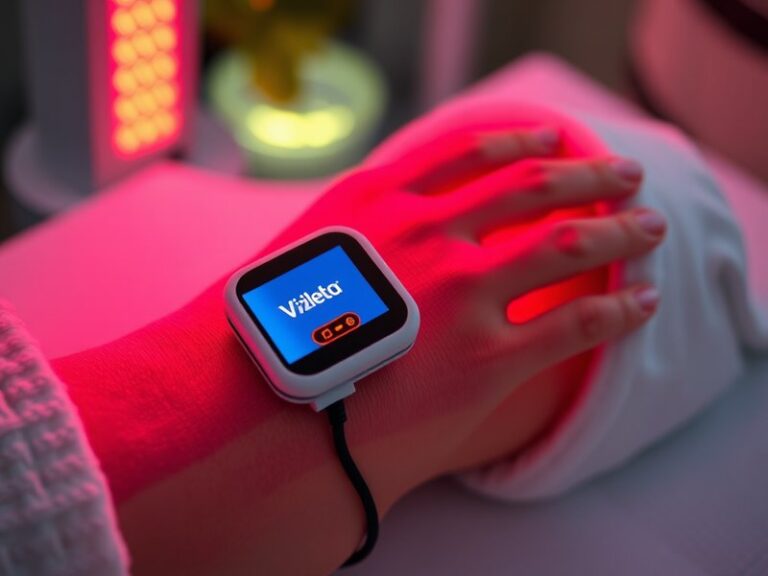Does Red Light Therapy Help Arthritic Knees?
Does Red Light Therapy Help Arthritic Knees?
Are you suffering from arthritic knee pain and searching for relief? Red light therapy (RLT) has been garnering attention as a potential treatment for various health conditions, including arthritis. This article will explore the effectiveness of RLT for arthritic knees, examining its benefits, considerations, alternatives, and frequently asked questions.
Key Takeaways
- Red light therapy may reduce pain and inflammation in arthritic knees.
- It is a non-invasive treatment option that can complement traditional therapies.
- While generally considered safe, discussing RLT with a healthcare provider is essential before beginning treatment.
What is Red Light Therapy?
Red light therapy is a therapeutic technique that uses low-level wavelengths of red light to stimulate healing processes in the body. This treatment is based on the principle that specific wavelengths can penetrate the skin and affect the underlying tissues, promoting cellular function and reducing inflammation.
Historically, RLT has been used in various medical settings, including wound healing, pain relief, and skin rejuvenation. By enhancing mitochondrial function, RLT encourages the production of adenosine triphosphate (ATP), the energy currency of cells, leading to improved tissue repair.
How Red Light Therapy Works
RLT typically involves devices that emit light at specific wavelengths, usually between 600 to 1,100 nanometers. The light penetrates the skin and stimulates cellular processes, which may reduce pain and promote healing for those suffering from arthritis.
Additionally, the anti-inflammatory properties of red light can alleviate secondary symptoms associated with arthritis, such as swelling and stiffness in the joints.
Explore further in How often should I do red light therapy?
What are the Benefits of Red Light Therapy?
Exploring red light therapy can reveal numerous potential benefits for individuals suffering from arthritic knees.
Pain Reduction
Several studies have suggested that RLT can lead to significant reductions in pain levels for arthritis patients. By decreasing inflammation and promoting healing, patients often experience enhanced mobility and decreased discomfort.
Improved Range of Motion
Many users report an increase in joint mobility after undergoing RLT. By reducing inflammation and promoting blood circulation, this therapy can lead to more flexible joints, which is particularly beneficial for arthritic patients.
Non-Invasive Treatment Option
Unlike surgeries or medications, RLT is a non-invasive and drug-free treatment alternative. This makes it an appealing option for those who prefer natural approaches to pain management.
Enhanced Healing Processes
RLT stimulates cellular activity, promoting faster healing and recovery. This can be particularly advantageous for chronic conditions like arthritis, where long-term joint health is essential.
Is it Possible to Use Red Light Therapy at Home?
Yes, it is possible to use red light therapy at home. Many over-the-counter devices are available for personal use. However, it’s essential to consider effectiveness, safety, and the proper usage of these devices.
What are the Advantages of Home Use?
Using RLT at home provides convenience and flexibility for individuals. Patients can incorporate therapy into their daily routines without frequent visits to clinics or treatment centers. Additionally, many home devices offer similar wavelengths and strengths found in professional equipment.
What are the Disadvantages of Home Use?
Home devices may not deliver the same potency or effectiveness as professional-grade equipment. Moreover, without proper guidance, individuals might misuse the devices or not achieve optimal results, underscoring the importance of understanding how to use RLT correctly.
What are the Things to Consider Before Trying Red Light Therapy?
Before embarking on RLT treatment, there are significant considerations to keep in mind.
Medical Consultation
It is crucial to discuss RLT with a healthcare provider, especially for individuals who are already on pain medications or other treatments for arthritis. A physician can evaluate the suitability of RLT based on individual health profiles.
Device Quality and Wavelength
Not all RLT devices are created equal. Researching reputable brands and ensuring that the device emits the correct wavelengths for therapeutic benefits is essential for safety and efficacy.
Treatment Duration and Frequency
Understanding the recommended duration and frequency of therapy sessions is vital. Consulting guidelines provided by manufacturers or healthcare professionals will help achieve optimal outcomes while minimizing the risk of overexposure.
What are the Alternatives to Red Light Therapy?
There are several alternative treatments available for arthritic knee pain.
Physical Therapy
Engaging in physical therapy can help strengthen the muscles around the knee joint, improve overall flexibility, and provide pain relief through tailored exercises and modalities.
Medication
Common medications for arthritis, including non-steroidal anti-inflammatory drugs (NSAIDs) and corticosteroids, may be prescribed to manage pain and inflammation effectively.
Alternative Therapies
Acupuncture, massage therapy, and chiropractic treatment offer additional avenues for pain relief and can enhance traditional approaches, providing comprehensive care.
Conclusion: Is it Recommended to Use Red Light Therapy?
Based on current findings, red light therapy may be a beneficial adjunct treatment for those suffering from arthritic knees. Its non-invasive nature, coupled with potential pain relief and improved joint function, makes it an appealing option. However, consultation with a healthcare professional is essential to determine suitability and effectiveness for individual situations.
Check our latest on Effectiveness of Red Light Therapy?
Frequently Asked Questions
Does red light therapy hurt?
No, red light therapy is generally painless and non-invasive. Patients typically report a warming sensation during treatment.
How long does it take to see results?
Results can vary, but many individuals begin to notice improvements within a few weeks of consistent use. However, some may require longer durations for more significant changes to occur.
Are there any side effects?
RLT is considered safe with minimal side effects. However, overexposure can lead to skin irritation or discomfort. It’s essential to follow guidelines and recommendations.
Can red light therapy be used with other treatments?
Yes, RLT can often be combined with other treatments, including physical therapy and medication. Always consult a healthcare provider for personalized advice.
How often should red light therapy be performed?
The frequency can vary depending on individual needs and the severity of arthritis. Typical recommendations range from a few sessions per week to daily treatments, but it is essential to follow professional advice.
